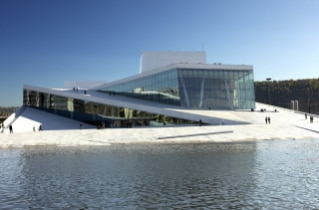The career of Massimilano Fuksas (Rome, 1944), is split into two phases. After studying at the Sapienza university and taking an active part in the movements of 1968 in Rome, he graduated with Ludovico Quaroni in 1969.
The first part of his career was spent as a partner in the studio Granma, opened together with his first wife Anna Maria Sacconi and characterised by a series of public works in small towns in central Italy built almost exclusively in reinforced concrete: schools, sports centres, swimming pools, cemeteries. The most noteworthy of these were the sports centre at Sassocorvaro (1972), the first work to show a Kahn-like influence, and the gym at Paliano (1982), with a false sloping elevation that had resonance particularly in France, where from the mid 1980s he gradually relocated to.
In 1989 he opened Studio Fuksas in Paris together with his second wife Doriana Mandrelli. Also on the other side of the Alps his work developed in small towns, but began to diversify in terms of materials, above all embracing the French tradition of metal construction. The entrance to the grottos at Niaux (1994) in Corten steel is a light and brutal metal structure, a sculptural sign in the rocky landscape that marks the entrance to the site of primitive cave paintings.
In 2000 Fuksas was director of the Venice Architecture Biennial entitled “Less Aesthetics, More Ethics”, installing at the centre of the corderie a long screen that projected videos of the megalopolis. In the same year he returned to Rome, winning various competitions thanks to his decisivelooking designs of strong impact that often landed him in the midst of media controversy: the long, glass carpet of the Fiera at Rho Pero (2005), the church of San Paolo Apostolo at Foligno (2009), the somewhat problematic Nuvola convention centre at EUR (2016) and terminal 3 at Shenzhen-Bao’an airport (2013) that extends with the elongated form of a manta ray.









